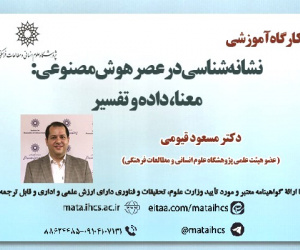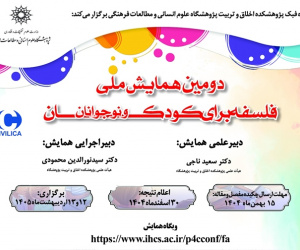از مرکز تا حاشیه: دگردیسی معنا در فرش محرابی
آرشیو
چکیده
مطالعه نمادها و کشف مسیر بازنمایی آن ها یکی از مشخصه های اصلی در مطالعات فرهنگی است. در سالیان اخیر توجه به این حوزه مطالعاتی در هنرهای سنتی و فرش به عنوان یکی از بسترهای مطالعات بینارشته ای مطرح شده است. از میان انواع فرش ها در ادوار تاریخی و فرهنگی، فرش های محرابی یکی از محمل های ظهور و بروز نمادها و تصویرهای مختلف بوده است. اوج ظهور فرش های محرابی با نمادها و طرح های گوناگون در دوره صفویه است که در طراحی فرش منجر به شکل گیری دسته های متنوعی از جمله محرابی گلدانی، گیاهی، ستون دار و درختی شد. در طراحی فرش محرابی دوره صفویه، طرح فرش به دلیل سیر حرکت معنا به واسطه حرکت نقش از مرکز به حاشیه اهمیت ویژه ای می یابد. در پژوهش حاضر با تمرکز بر فرش محرابی ستون دار دوره قاجار، روایت دگردیسی طرح درخت زندگی و فرایند مرکز زدایی در آن موردبحث قرارگرفته است. بر همین اساس می توان گفت که در طرح های محرابی درختی، به ویژه از نوع ستون دار، به سبب طراحی کامل محل محراب و نزدیکی به هنر واقع گرایی که در طراحی های قاجار مورد توجه بوده است، مرکز فرش فاقد هرگونه طرح و نقش است و تمامی نقوش به لچک بالایی فرش و حاشیه های داخلی، اصلی و بیرونی منتقل شده است. این مرکز زدایی در طراحی فرش تلاش دارد از مسیر دگردیسی طرح به دگردیسی معنا برسد؛ به بیانی واضح تر با کنارزده شدن نقش درخت زندگی از میان محراب و جایگزین شدن نمازگزار به عنوان بخشی از کلیت فرش، حس آرامش و سکون را در محراب نماز نیز دریافت می کند.From the center to the periphery: the transformation of meaning in the Mehrabi carpet
Studying symbols and discovering the path of their representation is one of the main characteristics in cultural studies. In recent years, attention has been paid to this field of study in traditional arts and carpets as one of the bases of interdisciplinary studies. Among the types of carpets in historical and cultural periods, Mehrabi carpets have been one of the carriers of the appearance of various symbols and images.The peak of the appearance of altar carpets with various symbols and designs is in the Safavid period, which led to the formation of various categories in carpet design, including vase, plant, pillar and tree altars. In the design of the altar carpet of the Safavid period, the design of the carpet becomes especially important due to the movement of meaning through the movement of the role from the center to the periphery, while in the Qajar period, a type of altar carpet appears seriously, in which we are facing decentralization. In the current research, focusing on the columned altar carpet of the Qajar period, the narrative of the metamorphosis of the tree of life design and the process of decentralization have been discussed in it. Based on this, it can be said that in the designs of tree altars, especially those with columns, due to the complete design of the place of the altar and the closeness to the art of realism that was of interest in Qajar designs,








